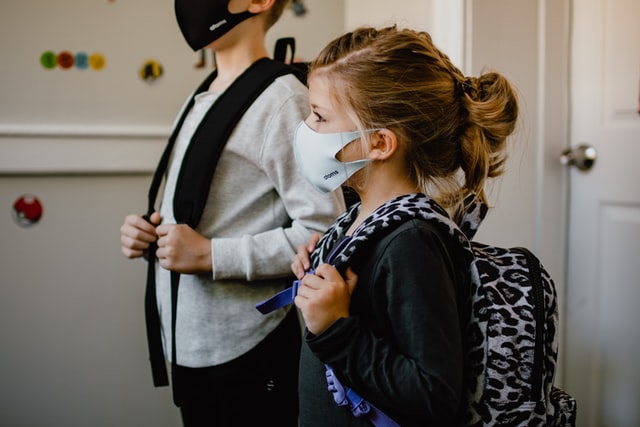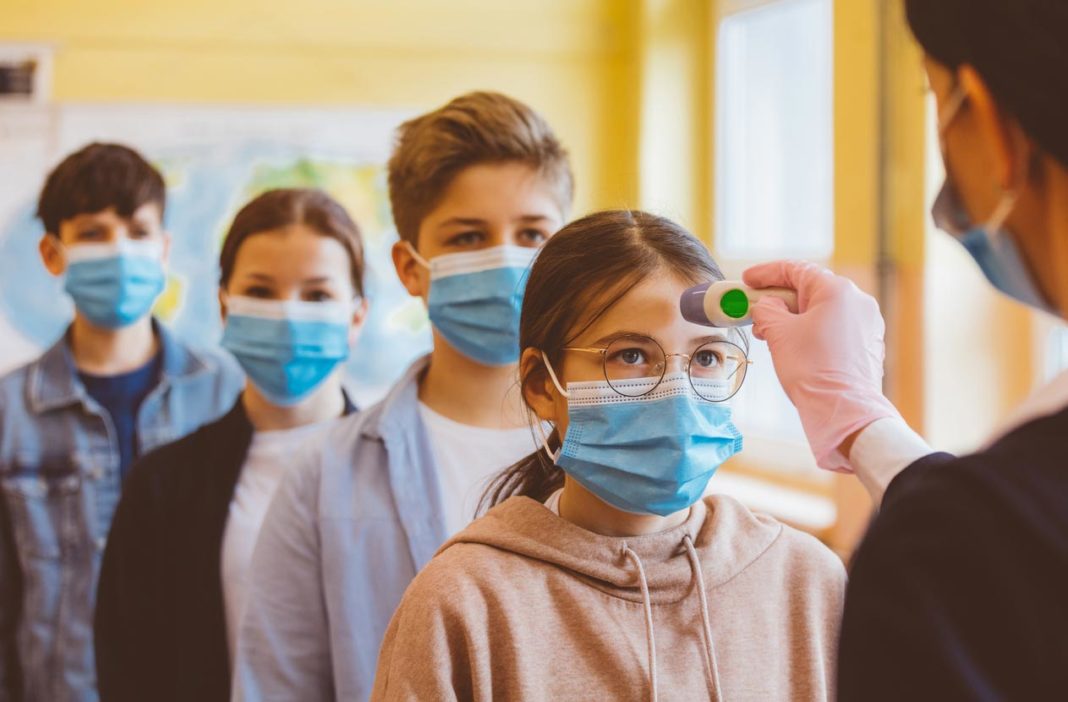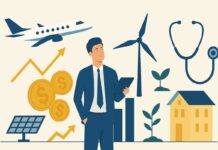We are living in troubled and uncertain times. It has been around one-and-a-half years that the scourge of COVID-19 burst upon an unsuspecting world and foisted an unprecedented public health crisis upon it. To control the spread of the virus, unprepared and mostly reactive countries rushed to implement emergency protocols. All this led to frustration, helplessness and heightened anxiety.
It is very tough for human beings to live with so much uncertainty as they crave information in the same manner as they crave food, sex and other basic needs. With no definitive answers forthcoming and due to mounting anxiety and an existential fear, they have moved into higher levels of hopelessness and subsequent depression.
When we look back, it seems almost unreal that a word people were so unfamiliar with is now on the tip of everyone’s tongue. Understandably, as the pandemic is all encompassing and the resulting environment is full of tension, people are more and more worried about not only catching the virus but its implications as well such as self isolating oneself and a possible lockdown by the state.
Initially, people brushed it off and sympathized from the comfort of their homes as they did not believe that the virus or its effects would reach their doorsteps. But as the pandemic plunged the world into a “crisis like no other”, the virus has conquered almost every country in the world.
As reported to WHO till 18 June 2021, globally, there have been 177,108,695 confirmed cases of COVID-19, including 3,840,223 deaths. Besides this dramatic loss of human life worldwide, the pandemic has thrown an unprecedented challenge to public health, food systems and the world of work all around. It has given rise to devastating social and economic disruption.
It is now crystal clear that the governments of most countries in the world underestimated the risks of a rapid spread of COVID-19 and hence, their response to the crisis were mostly reactive. As a result, national economies and businesses have been left counting the costs.
The environment today is eerily similar to the one in the last century when the world witnessed the coming into adulthood of “The Lost Generation”, in the aftermath of First World War. This social generational cohort rejected the traditions of the older generation and possessed a directionless, disoriented and wandering spirit.
How the Pandemic Affected the World Economy?
Besides being a global pandemic and public health crisis, COVID-19 has affected the global economy and financial markets most severely. As disease mitigation measures were strictly implemented across the globe, they resulted in significant reductions in income, a sharp rise in unemployment, and disruptions in transportation, service, and manufacturing industries.
As of now, around 50% of the world’s 3.3 billion global workforce is at the risk of losing its livelihood. Particularly vulnerable are the workers in informal economy as they have lost access to productive assets and mostly lack access to quality healthcare and social protection. Millions of enterprises all over the globe face an existential threat.
As the number of Covid-19 cases grew in the first months of the crisis,all the major share markets of the world like the FTSE, Dow Jones Industrial Average and the Nikkei went into a tailspin and witnessed huge falls. Though after the a announcement of the first vaccine in November, major Asian and US stock markets rallied and recovered but the FTSE recorded its worst performance since 2008 as it tanked 14.3% in 2020. This has led analysts to worry that any further lockdowns or delay in vaccination may trigger more market volatility in 2021.
As a direct corollary of the pandemic, most countries of the world are now in recession as millions of people have seen their incomes reduced or lost their jobs. As sectors of the economy like travel, tourism and hospitality came to a near standstill, a large number of people were put on government-supported job retention schemes. Major economies witnessed a large increase in unemployment rates.
According to an IMF estimate, the global economy shrunk by 4.4% in 2020, the steepest slowdown since the Great Depression of the 1930s. It is no surprise that by registering a growth of 2.3%, China was the only major economy to grow in 2020.
How the Pandemic Affected the Students?
The COVID-19 pandemic has not left untouched any sphere of the global society and the world has been left reeling under its impact. But one field where people fear its evil impact the most is on the students, the future citizens of the world.

Educational systems worldwide have been affected by the pandemic as the governments, in an attempt to reduce the spread of the coronavirus, decided to close educational institutions temporarily. This led to near-total closure of schools, colleges, universities and all sorts of educational institutions. According to the United Nations, more than 91 % of students all over the worldwere impacted by closing down of schools.
With their schools shut, the students are confined to their homes, with virtually no physical activity and extremely limited contact with friends. All known and recognized boards such as CBSE, ICSE, IB and A Levels have either been postponed or cancelled altogether. Recognized colleges such as MIT, Harvard, Princeton, Oxford etc. and closer home in India, IIMs and IITs, all downed their shutters and moved classes online. Standardized tests like GMAT, GRE, SATs, and ACTadministrations have been moved online or cancelled.
Some experts fear school closures and the loss of some family incomes could keep children out of school indefinitely while many others believe that the pandemic’s impact on education will continue long after the arrival of a COVID-19 vaccine.
Clearly, there is an all-compassing panic as students are bewildered regarding their educational objectives, their continuity and the steps needed to be taken.
The Effects of COVID-19 on Students in India
As the Indian government implemented strict lockdown to counter the wrath of coronavirus, the education system was ravaged due to closing down of schools and online learning nowhere near effective. Across the country, around 1.5 million schools were shuttered, affecting 286 million children from pre-primary to secondary levels. I addition to this, nearly 6 million children were already out of school prior to the pandemic.
To counter this disruption to education and with an avowed aim to invest in future citizens of the country, educational institutions moved onto the digital highway to provide modernized, digital education to students. But this solution has its own unique set of problems.
According to a government survey in 2019, only around 24 % Indian households had any type of internet access. An alarming feature of the report is that only 4% of the rural households have Internet access. A report of the NITI Aayog which came out in 2018 report revealed that around 55,000 Indian villages did not have any sort of mobile network coverage. Besides, gender disparity rears its ugly head in Internet access as well. While 36% of Indian men have mobile Internet access, only 16% women possess this modern facility.Furthermore, a class divide too exists, as impoverished students have the least access to the mobile telephony and Internet. A ministry of rural development survey, done in 2017-18 found that 36% of Indian schools had no electricity connection.
Besides, the emphasis on online education has already alienated a large number of students from impoverished and underprivileged strata and they have dropped out of schools altogether. Most of the teachers in B and C class towns and villages are not properly trained and so, inadequately equipped to transition to digital teaching.
The Lost Generation
It is a well-known fact that even before the arrival of COVID-19 pandemic, there were deep schisms between students from middle and high-income families and those fromimpoverished backgrounds. The children from lower socio-economic social strata do not continue their studies after some initial years of basic schooling; they do not undertake any form of professional, vocational or skills training and mostly descend into occupations with very limited future.

As not all children are affected in the same way, school closure may further deepen the gap in educational achievement between rich and poor students. In light of such a scenario, we are staring at a serious social crisis in the making.
The lives of present day children and adolescents will forever fall in the shadow of the evil COVID-19 pandemic. Now the moot question is, will the world or these children see themselves as a “lost generation”.
According to a report of the Organisation for Economic Co-operation and Development (OECD) which was released on 15 May 2021, these schisms have gotten exacerbated in part due to the disruptions to school education caused by COVID-19. The report further said that increased dependence on digital classrooms and schooling at home would probably have a long-lasting impact that would disproportionately affect poorer students.
As per the report, “Many youngsters, particularly from socio-economically disadvantaged households, may drop out of education. Vocational training provisions and programs also stand largely disrupted, and labour-market contractions have automatically resulted in decreased opportunities for skill development at work”.
“By changing how higher education and formal courses are delivered, creating greater financial constraints for families and increasing uncertainty, the pandemic is posing a severe risk of producing a lost generation.”
We are all aware that the intellectual development of the children is affected if they do not go to school. Even relatively brief periods of time out of education may have a life-long impact. In the present scenario, schools have been closed for a very long time and this gives rise to a very serious concern. Because when children don’t attend school for long periods, for whatever reason, they tend to forget what they knew. This regression will be very tough to rectify. It is a fact that the IQ of an adult is shaped by the time he/she spends in education, such a regression could lead to serious and life-long effects on the cognitive ability of the future citizens of the world.
In Conclusion
As the COVID-19 pandemic does not seem to be ending soon, it has already widened inequalities across the globe, and undermined global progress. It will have repercussions long after the pandemic threat will have passed.
The academic life of the students has been severely disrupted by school closures, reduction in family income and limited access to digital resources. Besides, their mental well-being has been affected by lack of outdoor activity, changes in daily routine, social distancing and disturbed sleeping patterns.
Looking at the flip side of the coin, there should be no premature opening of schools as densely packed and indoor spaces fuel higher transmission. Though the children may not be at a higher risk than their teachers, they may become virus carriers and transmit the same to the vulnerable sections of the society.
To save lives and protect economic prosperity, the countries of the world need to undertake proactive action asfurther disease outbreaks are morethan likely in the near future. And this course of action comprises tests, treatments and vaccines, and its cost is likely to be a fraction of the enormous economic loss that the pandemic causes each passing day.
Also Read:



















